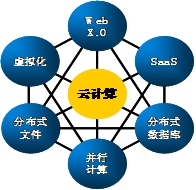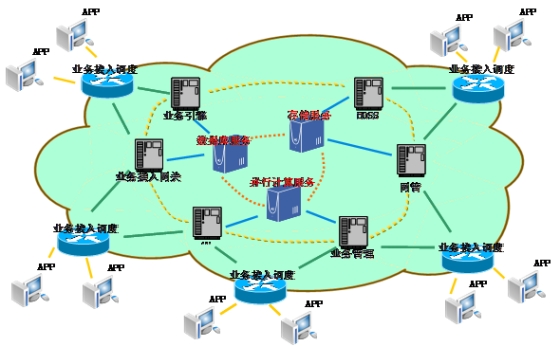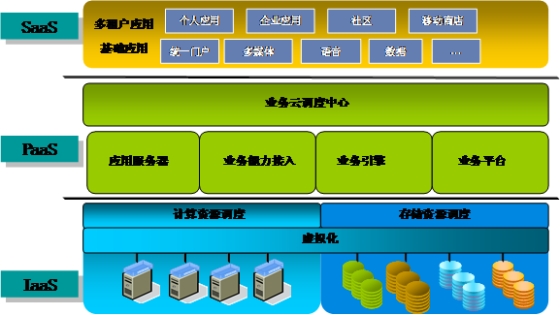Computing technology drives innovation in telecommunications business architecture
In the all-IP network environment, combined with the technical characteristics of cloud computing, analyze and discuss the innovative application of cloud computing technology in telecommunications business networks.
As customization, customization, and personalization have become the mainstream needs of users, the independence of traditional telecommunications service networks is increasing, and the original closed service model is facing huge challenges. In the new competitive environment, telecommunications services need to find new architecture and technical directions.
These new architectures and technical directions are mainly manifested in the following aspects: First, the transformation from centralized deployment to distributed deployment, flat network planning, one-point access, and full network services. The second is the introduction of new Internet technologies to achieve distributed computing and storage, large capacity, flexible and scalable, and rapid deployment. The third is to shift from focusing on pure business provision to focusing on user services, integrating business management, information storage, and software services to achieve innovative business. The fourth is to integrate telecommunications services and Internet services, provide an open development environment, and activate community services.
With the all-IP and broadband development of telecommunications networks, the integration and penetration of telecommunications technology and IT / Internet technology has further deepened, especially the cloud computing technology that has recently emerged, which has attracted great attention from the telecommunications industry, drawing on the development of Internet cloud computing , Organizing and using telecommunication network resources (including access, scheduling, management, storage, security, services, etc.) in the form of cloud computing has become a new trend in the development of telecommunications services. Cloud computing brings CAPEX and OPEX reduction, energy saving and reduction Significant advantages such as platooning, improving network robustness and flexibility have obvious appeal for operators.
Typical technical characteristics of cloud computing
The typical technical characteristics of cloud computing are shown in Figure 1, which can be divided into virtualization technology, distributed technology, parallel computing / distributed computing, XaaS, WEB X.0 and other technologies. 
Figure 1 Typical technical characteristics of cloud computing
Telecommunication business network planning based on cloud computing
Referring to the cloud computing distributed hierarchical service architecture idea, the telecommunications business network can be planned with reference to FIG. 2. 
Figure 2 Schematic diagram of telecom business network planning based on cloud computing
The telecommunications business network is divided into three layers, from the inside to the outside, namely the basic service layer, the service providing layer and the service access scheduling layer. The basic service layer provides various common and shared basic service capabilities, including storage, database, parallel computing, etc. The use of virtualization technology can provide various infrastructures at low cost, large scale, and high efficiency; the business providing layer includes business engine, business Various platform services such as management, business access gateway, network management, etc., can adopt a unified platform architecture, open telecommunications capabilities to the outside world, introduce external development forces, and form a benign ecosystem; the business access scheduling layer implements various application business interfaces Into the telecommunications cloud computing network, unified scheduling, users can achieve customized services on demand anytime, anywhere through various wired or wireless access methods. The specific business construction planning can be carried out in stages. The first is the construction of the basic service layer, which mainly realizes the virtualization of hardware resources, shields the correlation of software to hardware, enhances the maintainability and rapid deployment capability of the underlying system, provides shared storage resources, and makes small changes to existing business software , Can be directly deployed on the basic service platform to improve the reliability of business systems. Then build the service provider layer and service access scheduling layer, use distributed technology, build a business capability engine and scheduling management platform, maximize the use of virtualized hardware capabilities, and at the same time make the business system with flexible expansion capabilities, and to third parties ( Including the Internet developer community) provides application development, testing and deployment environments, enabling more users to participate in the in-depth customization and development of the business.
Technological innovation of telecom business products based on cloud computing
Corresponding to the cloud computing-based telecommunications business network planning requirements, in the design of specific products, the concept of layering by service function should also be followed, and the products should be constructed according to the three layers of IaaS, PaaS, and SaaS. The schematic design of the telecommunication service product architecture based on cloud computing is shown in Figure 3.
The IaaS layer mainly adopts virtualized software technology and chip support capabilities, and divides storage and computing resources (CPU, memory, IO, etc.) capabilities according to the smallest configurable granularity to form independent virtual machine images. Unified backup and migration mechanism. The IaaS layer provides a unified API to achieve unified scheduling and sharing of storage resources and computing resources within the product.
The PaaS layer integrates various existing business capabilities and can be categorized as application servers, business capability access, business engines, and business open platforms. Based on the business capability needs, the basic service capabilities are measured, and APIs provided by IaaS are used to call Hardware resources, provide business dispatch center services upwards, monitor various resources of the platform in real time, and open these resources to SaaS users through APIs. In the three-tier architecture, PaaS is a direct manifestation of the core capabilities of the business.
The SaaS layer includes basic applications and multi-tenant applications. Through the API interface provided by the PaaS platform, business capability invocation, packaging, and user services are realized. Basic applications include traditional telecommunications business capabilities, such as unified portal, multimedia, voice, and data. Multi-tenant applications include personal applications, enterprise applications, communities, and mobile stores. Multi-tenant services are widely used on the Internet. Application instances between different tenants can be shared and load balanced, but they are rarely used in the telecommunications field. The introduction of new SaaS technologies can optimize the development model of telecommunications services. 
Figure 3 Schematic diagram of cloud computing-based telecommunications business product architecture design
Cloud computing application summary
Cloud computing technology is still evolving, and many concepts have not yet been recognized by the industry. Standardization lags behind the development of applications. By introducing these new technologies and applying and transforming in telecommunications services, resource sharing and cost can be achieved Reduction, structural optimization and business innovation have brought new development opportunities to the telecommunications business. With the further deepening of the integration of the Internet and telecommunications, we believe that the future cloud computing technology will open up a new blue sky for the telecommunications business.
Solar LED land lamp uses sunlight as the energy source, charges during the day and uses at night, does not need complex and expensive pipeline laying, can arbitrarily adjust the layout of lamps and lanterns, safe and energy-saving, pollution-free, stable and reliable without manual operation, saving electricity and maintenance. Solar LED street lamp is mainly composed of solar cell module (including bracket), LED lamp holder, control box (with controller, battery) and lamp pole.
Solar Led Street Light,Street Light Lamp,Solar Powered Street Lights,Solar Powered Led Street Lights
Yangzhou Heli Photoelectric Co., Ltd. , https://www.heli-eee.com